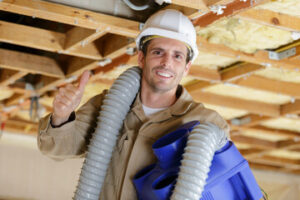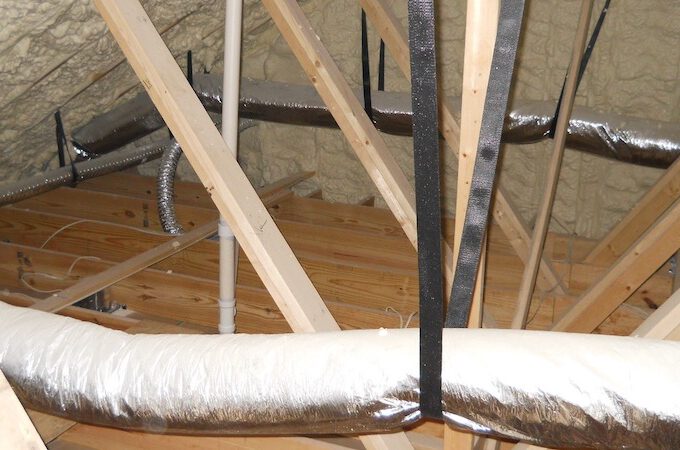Insulation Removal – Why You Shouldn’t Do It Yourself
Insulation that has been exposed to moisture or mold can be a structural risk for your home. It can also cause health problems and allergies.
Before you begin insulation removal, make sure you have some supplies ready. You will need protective gear, large garbage bags, and a trailer to transport your old insulation to disposal facilities. Perth Insulation Remover can do the job for you.
 Protective Gear
Protective Gear
When performing insulation removal, it is important to prioritize safety. This includes wearing proper clothing, gloves, and a respirator to prevent irritation from the insulation fibers. It is also a good idea to have a first aid kit on hand in case of any accidents or injuries that may occur during the process.
Before beginning, it is important to fully assess the condition and type of attic insulation to understand what types of tools and equipment will be needed for the job. This will help ensure that the removal process is conducted efficiently and effectively.
Once the attic insulation has been removed, it is important to clean up the attic space and dispose of any waste materials. This will help prevent future moisture damage and pest issues, which can affect the integrity of the attic space. It is also recommended to have a vacuum cleaner that has specialized filtration to prevent the spread of harmful particulate matter throughout your home’s forced air system.
Lastly, it is a good idea to have a trash bag or container on hand to discard any debris that may be left behind from the insulation removal process. It is also important to label the bags and follow proper waste disposal guidelines.
During the insulation removal process, it is also important to have a headlamp or portable lighting in the attic to illuminate the space and ensure a safe working environment. Lastly, it is important to have heavy-duty plastic bags for the collection of old insulation material for proper disposal. It is also a good idea to invest in an insulation removal vacuum that has a special filter to avoid the spread of allergens throughout the attic space and into your home’s forced air system.
Preparation
When you’re ready to tackle insulation removal yourself, you must be well prepared. This includes having all the necessary safety gear. This includes rubber-coated gloves, masks, and goggles to protect your hands and lungs from any contaminants. You should also wear a full-body jumpsuit to prevent any irritants from getting on your skin during the process. You’ll also need a vacuum cleaner, a rake, and a dustpan to clear away any remnants. It’s also a good idea to have a few trash bags on hand to transport the old and contaminated insulation.
There are several reasons why you might need to remove your insulation, including pest infestations, water damage, and age. All of these factors can affect the efficiency of your home’s energy system and lead to poor air quality in the house. Having damaged insulation can compromise the structural integrity of your attic or walls and may also lead to mold growth, which poses health risks for you and your family members.
Another sign that it’s time to remove your insulation is when you notice an increase in your energy bills. This is due to air escaping through gaps or thin spots in your attic’s insulation. The best way to solve this issue is by having the insulation replaced with new and improved insulation that will save you money on your utilities.
Old and damaged insulation is a breeding ground for allergens like dust, mildew, and mold spores, which can cause respiratory problems for your family. Mold in the attic can also rot and damage the structure of your home, as it can seep through to the walls and ceilings. In addition to this, if your old insulation is contaminated with vermiculite or older cellulose, you will need to have a professional asbestos abatement specialist deal with the materials.
Insulation can also become misaligned over time, which significantly reduces its insulative properties. Having it removed and replacing it with new insulation will help you get back to the high energy efficiency levels your home was built for.
Safety Measures
Insulation removal can be a hazardous and messy process that should only be performed by experienced professionals. It stirs up old, wet insulation – often composed of rodent urine and feces – which can cause asthma and respiratory issues when it is inhaled. It also disturbs mold spores and other allergens, which may cause allergic reactions in some individuals. Additionally, a lot of older insulation is toxic, containing harmful materials such as formaldehyde or carcinogenic asbestos.
Before beginning the insulation removal process, make sure you’re properly equipped with safety gear and have a clear work space. Put on protective goggles, gloves, a dust mask, and long-sleeved clothing to protect yourself from loose insulation fibers and other contaminants. It’s also important to turn off the electricity in the attic before starting – doing so will minimize potential electrical hazards and prevent accidental damage to wiring and pipes.
Once you’re ready to start, begin by clearing the attic of any obstructions or stored items and sweeping away any cobwebs or other debris. Once the attic is clear, use an insulation removal rake or shovel to loosen and collect loose insulation material. It’s best to work in small sections at a time to avoid overwhelming yourself and to ensure you’re able to properly dispose of all insulation material.
As you rake or scoop up the old insulation, be sure to transfer it into heavy-duty bags that are specifically designed for insulation removal. Once a bag is full, seal it tightly and secure it with duct tape or zip ties. Then, label the bags so you can easily identify them when it comes time to throw them out.
Once you’re finished, be sure to follow proper waste disposal procedures and contact your local facility to determine appropriate guidelines and locations. Be sure to separate the insulation from other waste materials, clearly label the bags, and keep them sealed until they are ready to be discarded. This will help you avoid mixing and cross-contaminating your attic space with other materials that could be contaminated with pests, mold, or other harmful substances.
Equipment
When removing insulation, it’s important to be prepared. You need the right equipment, including a commercial vacuum that will efficiently suck up all debris and contaminated insulation material. You’ll also need a ladder to get into the attic and the right equipment to prep the space. You’ll need to prepare your home for the mess, cover walls and floors, and clear a pathway from the front door to the attic access point. Once you have all the necessary gear, stage it in your garage or on the lawn outside your house and make sure it’s easy to reach.
You’ll need a heavy-duty insulation removal vacuum, preferably one that’s gas-powered and comes with metal hose connectors and large bags. You’ll also need a ladder, a HEPA-filtered shop vac, and 50-gallon waste bags. It’s best to purchase rakes and dustpans as well. You can rent these items or buy them. Before you start removing the insulation, it’s a good idea to take a break and get fresh air every 15 minutes or so. Insulation is a dense material that can cause your body temperature to rise rapidly, so taking frequent breaks will help prevent health problems.
Old insulation often contains harmful mold, pests, or other materials that can harm your indoor air quality. It’s important to remove damaged and contaminated insulation quickly so it doesn’t continue to affect your health or property value.
If you don’t have the time or energy to deal with the cleanup yourself, hiring an insulation professional is a great option. Insulation contractors can handle all your residential insulation needs at your property.
Insulation professionals can install new insulation immediately after removing the old and damaged material. This will ensure that your home is adequately insulated and reduce your energy bills. They will also inspect your attic for any existing issues that need to be addressed, such as leaks and other damage, before installing any new insulation. This will save you time and money in the long run.

